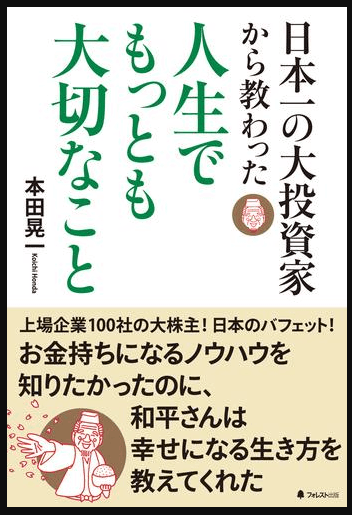のに (noni) Meaning Japanese Grammar - Even If
Sandro Maglione
Get in touch with meThe particle のに (noni) means even if, however, despite, and in certain situations it also takes on the meaning of in order to, so as.
Actually the meaning of のに is the same for both of its translations: (A) のに、(B) indicates that given (A), it resulted in (B).
In this post we learn more about the meaning of のに, how it is formed, and when のに is used through real example sentences.
What is the structure of the particle のに
In reality, the のに particle is in made up of two other particles:
- Particle の(nominalize)
- Particle に (destination)
The meaning of のに derives directly from the two particles it is composed of:
- の is used to nominalize what is indicated in the first part of the sentence
- に is used to indicate a destination, to reach what has been said
We can break down an example sentence to understand this meaning:
彼は忙しいのに、ゲームをしている。
Even though he has a lot to do he is playing video games.
- 彼は忙しい:
he has a lot to dois the first part of the sentence, which indicates the context or the current situation - の: nominalizes the previous sentence, it can be translated with
the fact that...,the thing that...(makes the sentence a noun)
彼は忙しいの
The fact that he has a lot to do
- に: indicates the destination that leads to what is indicated in the second part of the sentence, we can translate it with
...led to...
彼は忙しいのに
The fact that he has a lot to do has led to...
- ゲームをしている :
he is playing video gamesindicates the current situation. In this case the result is illogical and unexpected, for this reason のに translates aseven if,despite
If, on the other hand, what is indicated after のに was a direct action aimed at reaching the destination stated in the first part (for a specific purpose), then のに could be translated as for the purpose of, in order to:
会社に行くのにバスと電車を使っている。
In order to go to work, I use the bus or the train.
To use のに to indicate a purpose のに must be preceded by a volitional verb in its dictionary form.
のに to indicate "even if"
The first use of のに is to indicate something that happened despite another event.
のに is a connective particle (接続助詞) and as such it can follow verbs, adjectives, and nouns. Before のに with an adjective ending in な or a noun you must add な:
The second sentence must be contrary to what is indicated in the first.
急いでいるのに、バスが来ない。
Although I hurried, the bus didn't arrive.
In this example we see how the first part of the sentence indicates the action of hurrying (急ぐ) to make sure you don't miss the bus. However, the use of のに indicates that something unexpected happened, which is then specified in the second part of the sentence: the bus didn't come (バスが来ない).
A comment on a music video:

曲自体は結構シンプルなのにここまでノスタルジー感じさせるセンスすごい。
The song itself is pretty simple, but the sense of nostalgia is amazing.
The meaning is: "Even though the song is simple, it actually conveys an incredible sense of nostalgia."
シンプルで効果的な方法です。
It is a simple but effective method.
It is often possible to omit the second part of the sentence when it is obvious or you prefer not to say it explicitly.
金持ちだったらいいのに。
It would be nice if I were rich.
In the example we see that のに is at the end of the sentence. The rest of the sentence is in fact omitted because it is obvious or implied:
金持ちだったらいいのに、今お金がない。
It would be nice if I were rich, even if now I don't have any money.
たらいいのに and ばいいのに are two expressions that use のに with たら and ば (conditional forms)
毎日読めばいいのに。
It would be good if you read every day.
のに to indicate "for the purpose of"
This second use of のに is the same as seen before with even if: what changes is the relationship between what was said in the first sentence (before のに) and the result indicated in the second part.
In this usage のに must follow a volitional verb in the dictionary form:
When のに translates for the purpose of, the second part of the sentence means something that is necessary for the first part to happen.
宿題をするのに、3時間がかかる。
Doing homework takes 3 hours.
We note that, unlike the use of のに translated as even if, in this case the second part of the sentence is not contrary to what was said in the first part.
In fact, what has been said in the second part follows directly to specify what is necessary so that what has been said can be achieved.
Difference between のに and に
のに uses the particle に to indicate a destination. The difference between using のに and using the particle に alone is that のに indicates a longer and more elaborate process.
すき焼を作るのに勉強している。
In order to make Sukiyaki I am studying.
From the example we can understand how the process of studying (勉強する) is not immediate, but rather a long lasting action. With only the particle に instead the intention is to indicate a destination, without implying a long process to arrive at what is indicated:
本を読むに眼鏡を買った。
I bought some glasses to read the book.
Phrase from the cover of the book by 本田晃一 Koichi Honda, on the subject of personal and economic development, entitled [人生でもっとも大切なこと]: 'The most important thing in life'.

お金持ちになるノウハウを知りたかったのに、和平さんは幸せになる生き方を教えてくれた。
I wanted to know how to become rich, but Mr Wahei taught me how to live a happy life.
Examples of のに
約束をしたのに、彼女は来なかった。
Even though he promised he didn't come.
ダイエットをしたのに、太りました。
Even though I went on a diet, I gained weight.
私は日本語の新聞を読むのに辞書を使う。
I use a dictionary to read the newspaper in Japanese.
Similar grammar points in Japanese 📚
~ていく
~ていく (teiku) Meaning Japanese Grammar - Keep Doing
てよかった
てよかった (te yokatta) Meaning Japanese Grammar - I'm Glad That...
それでも
それでも (sore demo) Meaning Japanese Grammar - Still
それでもいい
それでもいい (soredemoii) Meaning Japanese Grammar - It's Fine
させられる・せられる
させられる・せられる (saserareru serareru) Meaning Japanese Grammar - To Be Made To Do Something
ないで
ないで (naide) Meaning Japanese Grammar - Without Doing

